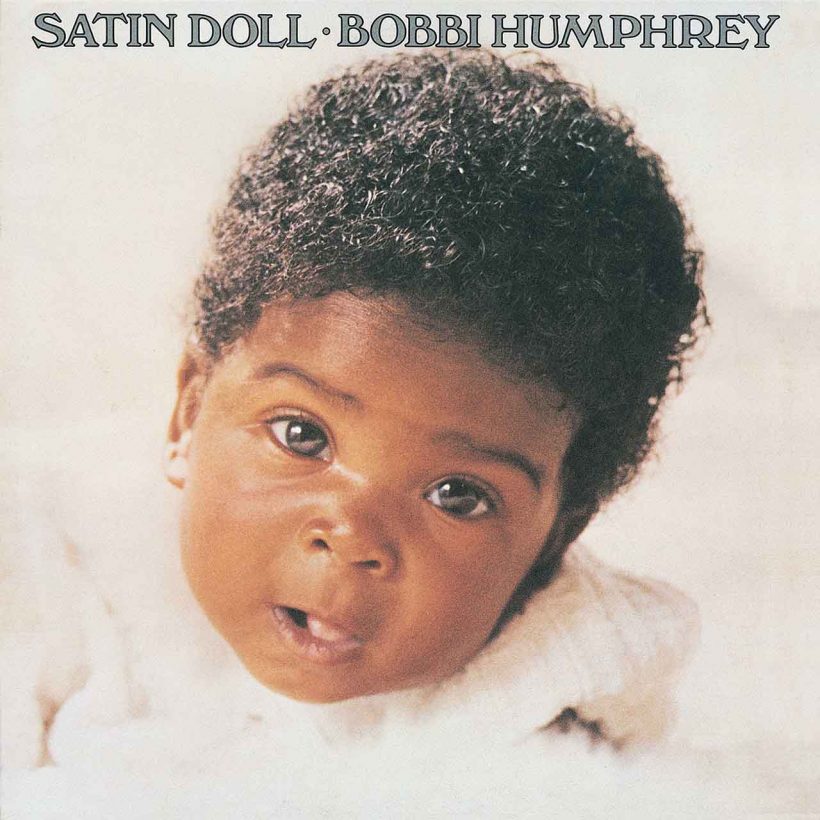‘Satin Doll’: When Flutist Bobbi Humphrey Conquered The US Pop Charts
With its skillful blend of jazz, soul, and funk flavors, the Texas musician’s fifth Blue Note LP became one of the label’s best-selling 70s albums.

Bobbi Humphrey wasn’t the first female musician to sign with Blue Note Records – pianist Jutta Hipp and singers Dodo Greene and Sheila Jordan preceded her – but the Texas flutist made a bigger impact commercially, scoring four hit albums and an equal number of charting singles for the iconic jazz label as her career took flight in the early 1970s. Her most successful recording was 1974’s Satin Doll, her second Blue Note collaboration with producer Larry Mizell, the mastermind behind her previous studio album Blacks & Blues.
Raised in Dallas, Texas, Barbara Ann “Bobbi” Humphrey was fresh out of college when, heeding the advice of bebop trumpet legend Dizzy Gillespie whom she met at a jazz festival, Humphrey relocated to New York in the summer of 1971. Arriving by Greyhound bus with her flute and $400, she met up with her older cousin, Eddie Preston, who played trumpet with Duke Ellington’s band. Preston introduced her to Ellington, who invited the newbie to jam with him. News of the talented young flutist spread fast. Within a week of her arrival in the Big Apple, 20-year-old Humphrey had shared the stage with jazz legends Rahsaan Roland Kirk and Cannonball Adderley.
Listen to Bobbi Humphrey’s Satin Doll now.
Shortly afterward, Humphrey found herself with a record deal after dropping off a demo tape at the offices of Blue Note Records. Bowled over by the young flutist’s soulful virtuosity, the label’s then-president Dr. George Butler instantly signed her, producing her first two Blue Note albums, 1971’s Flute-In and 72’s Dig This!, both largely devoted to soul and jazz covers. Then in 1973, Butler handed the production reins to her third album Blacks & Blues to Los Angeles-based Larry Mizell.
Working first with Donald Byrd in 1972 on the trumpeter’s million-selling Black Byrd album, Mizell gave Blue Note a new sound for the 70s that interlaced jazz, funk, and soul elements with vocal choruses and pop song structures. After his success with Byrd, Mizell gave a similar makeover to Humphrey, whose resulting 1973 album Blacks & Blues was a surprise hit in both the US R&B and pop charts. Encouraged by the public reaction to her new sound, Humphrey reunited with Mizell and his team for Satin Doll, recorded in the summer of 1974.
As with Blacks & Blues, Mizell and his co-producer, Chuck Davis, used a cadre of session musician luminaries – including guitarist Melvin “Wah Wah Watson” Ragin, bassist Chuck Rainey, and drummer Harvey Mason – to create a range of backing tracks for Humphrey to improvise over.
Opening with the tone-setting “New York Times” – a track defined by a chanted vocal refrain, layered synth textures, and atmospheric sound effects drizzled over a hypnotic groove – the album offered several compelling widescreen jazz-funk pieces, including the playful “Fun House,” a No. 82 US R&B hit single. Offering contrast, the languid ballads “Rain Again” and “San Francisco Nights” highlighted Humphrey’s virtuosity in a slower setting. The flutist also revealed her skill on two outstanding cover versions: Stevie Wonder’s “You Are The Sunshine Of My Life” and a cinematic funk version of Duke Ellington’s evergreen “Satin Doll,” the latter intended as a tribute to its composer, who died earlier in 1974.
Despite her small stature – she only stands at 4’ 11” tall – Bobbi Humphrey became a bonafide giant of jazz-funk music largely thanks to Satin Doll, which pictured the flutist’s first child, daughter Ricci Lynn, on its front cover. The album rocketed to No. 5 on the US R&B Albums chart but also proved a big crossover success, peaking at No. 30 on The Billboard 200 during an impressive eighteen-week chart run that made it one of Blue Note’s best-selling albums of the 70s.
Since then, Satin Doll has continued to attract new audiences through reissues and artists such as Ludacris, Black Nubian, Marsha Ambrosius, and DJ Shadow sampling and recycling some of its tracks to make new music. Together with Blacks And Blues, it remains a go-to album in Humphrey’s discography.












